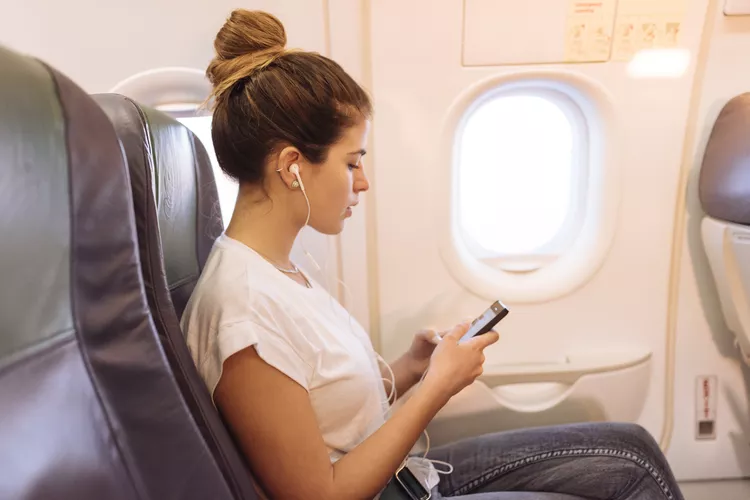Traveling to Africa: Tips for Surviving Long-Haul Flights
If you’re traveling to Africa from the USA, the journey to your final destination can take more than 30 hours – especially if you happen to live in the Midwest or on the West Coast. Depending on where you’re headed, East Coast residents may be able to fly direct, but options are limited and costly. Moreover, even direct flights from New York to Johannesburg take almost 15 hours each way – an endurance test that takes a heavy toll on your body.
Many visitors suffer badly from jet lag, as traveling from the USA includes crossing a minimum of four time zones. Consequently, the disorientation caused by jet lag is often worsened by exhaustion, triggered by sleepless nights on airplanes or long layovers in busy airports. However, the rewards of a trip to Africa far outweigh the drawbacks of getting there, and there are ways to minimize the negative effects of long-haul flying.
Stock up on Sleep
Unless you’re fortunate enough to doze off easily, it’s likely you won’t get much sleep on your flight to Africa. This is especially true in economy class, where limited space and noise can hinder comfort. Therefore, one of the best ways to prevent exhaustion is to ensure you get plenty of restful nights in the days leading up to your departure.
Exercise on Board
Sitting still for too long on a trans-Atlantic flight can lead to stiffness, poor circulation, and swelling. For some travelers, flying also increases the risk of Deep Vein Thrombosis (DVT), or blood clotting. Consequently, exercise plays a crucial role in combating these issues by enhancing circulation. You can take periodic walks around the cabin or perform various recommended exercises from your seat. Most airlines provide a guide to these exercises in their safety manual located in the seatback pocket.
Invest in Accessories
If you are at a higher risk for DVT (including recent surgery patients), consider investing in compression stockings. These assist in minimizing clotting likelihood by boosting blood flow. If you find it challenging to equalize during the flight (by swallowing or gently blowing against a blocked nose), grab a pack of hard candy at duty-free to suck on during take-off and landing. Additionally, essential accessories such as earplugs, sleep masks, and portable travel pillows can significantly enhance your on-board experience.
Avoid Alcohol & Caffeine
It’s easy to be tempted by the (usually) free alcohol on your long-haul flight, especially if you’re anxious about the journey. However, both alcohol and caffeine dehydrate your body, particularly when exposed to the cabin’s dry recycled air. The effects of dehydration include nausea and headaches—unwelcome symptoms that can turn any journey into a nightmare. Instead, stay hydrated with plenty of water and consider packing a bottle of South African wine in your hand luggage for later enjoyment.
Stay Moisturized
Even if you abstain from alcohol, it is likely you will feel parched at some point during the flight. Don’t hesitate to request water from the cabin crew between meals, or purchase a bottle from an airport convenience store after passing through security. Moisturizers, nasal sprays, eye drops, and facial spritzers also help counteract the dryness of the airplane environment. However, ensure that each liquid packed is under the TSA limit of 3.4 oz/100 ml.
Consider Your Wardrobe
While stylish clothing has its place, comfort should take precedence during your flight. Opt for loose, comfortable attire that accommodates minor swelling, along with shoes that can be easily removed once seated. Layer your clothing to adapt to varying temperatures, whether it be the chill of the airport air-conditioning or the warmth upon arrival. If traveling from one extreme temperature to another, consider packing a spare outfit in your hand luggage.
Trick Your Mind
Jet lag is significantly influenced by your mindset and internal body clock. To help adjust your body, set your watch to your destination’s local time as soon as you board the flight. Once you land, adapt your behavior to the local schedule—meaning you should eat meals at the appropriate times, even if you’re not hungry, and go to bed at a reasonable hour, even if you don’t feel tired. Following your first night’s sleep, your body should quickly align with local time in Africa.
Traveling With Children
Africa presents one of the most rewarding destinations for a family vacation. However, long-distance flights can be especially challenging when traveling with young children. For toddlers and older kids, keeping them entertained is key—be sure to pack numerous travel-friendly toys, along with a fully charged iPad loaded with their favorite games or movies. If traveling with a baby, breastfeeding or offering a bottle during take-off and landing can alleviate pressure changes in their ears.
Top Tip: Don’t forget to inquire with your airline about reserving a SkyCot. These bassinets attach to the bulkhead, ensuring your little one can sleep comfortably throughout the flight.





